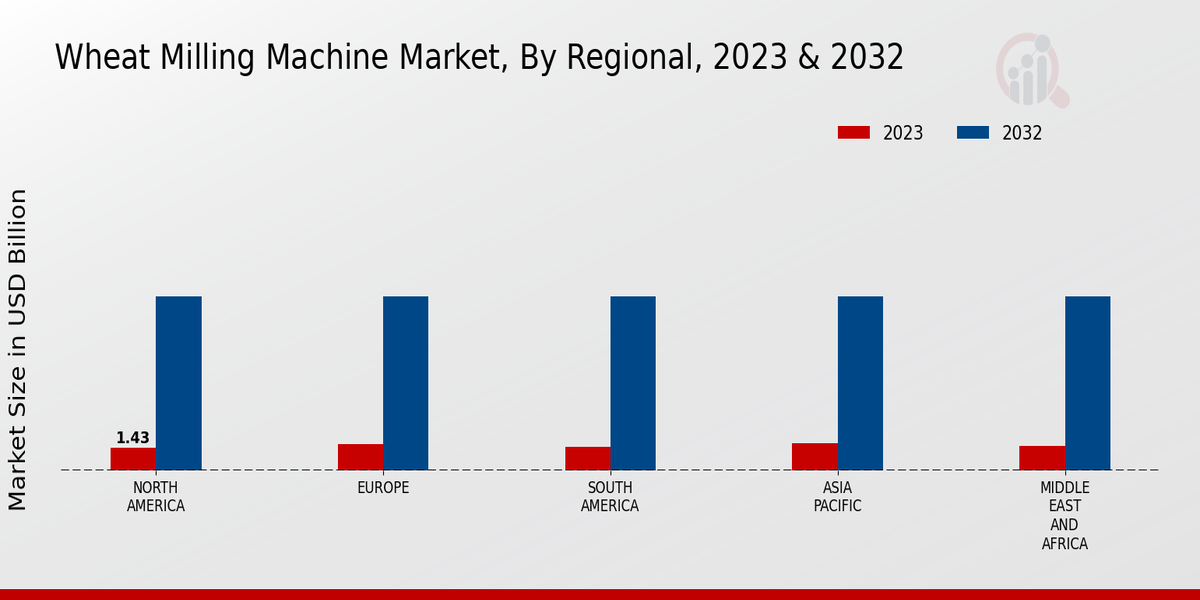Rising Demand for Flour Products
The Global Wheat Milling Machine Market Industry experiences a notable surge in demand for flour-based products, driven by the increasing consumption of baked goods and convenience foods. As consumer preferences shift towards healthier options, whole grain and specialty flours gain traction. This trend is reflected in the projected market size of 7.92 USD Billion in 2024, indicating a robust growth trajectory. The expansion of the food processing sector further fuels this demand, as manufacturers seek efficient milling solutions to meet consumer needs. Consequently, the Global Wheat Milling Machine Market Industry is poised for sustained growth as it adapts to evolving consumer preferences.
Growing Population and Urbanization
The Global Wheat Milling Machine Market Industry is significantly influenced by the growing global population and rapid urbanization. As urban areas expand, the demand for processed food products rises, leading to increased flour consumption. This trend is particularly evident in developing regions, where urban populations are projected to grow substantially. The need for efficient milling solutions to cater to this rising demand is paramount. Consequently, the Global Wheat Milling Machine Market Industry is expected to witness a compound annual growth rate of 4.0% from 2025 to 2035, reflecting the industry's adaptability to changing demographic trends and consumer preferences.
Government Initiatives Supporting Agriculture
Government initiatives aimed at enhancing agricultural productivity and food security significantly impact the Global Wheat Milling Machine Market Industry. Various countries implement policies that promote the modernization of milling facilities and support local farmers. These initiatives often include financial incentives for adopting advanced milling technologies, which can improve efficiency and reduce production costs. As governments recognize the importance of a robust milling sector in ensuring food supply stability, the Global Wheat Milling Machine Market Industry is likely to benefit from increased investments and support. This environment fosters growth and innovation, positioning the industry for future expansion.
Market Consolidation and Strategic Partnerships
The Global Wheat Milling Machine Market Industry is witnessing a trend towards consolidation and strategic partnerships among key players. This trend is driven by the need for companies to enhance their competitive edge and expand their market reach. Mergers and acquisitions allow firms to pool resources, share technology, and access new markets. Additionally, partnerships with agricultural cooperatives and food manufacturers enable milling companies to better align their products with market demands. As the industry evolves, these strategic moves are likely to shape the landscape of the Global Wheat Milling Machine Market Industry, fostering innovation and improving operational efficiencies.
Technological Advancements in Milling Equipment
Technological innovations play a pivotal role in shaping the Global Wheat Milling Machine Market Industry. The introduction of advanced milling technologies, such as automated systems and digital monitoring, enhances operational efficiency and product quality. These advancements enable millers to optimize their processes, reduce waste, and improve yield. For instance, the integration of IoT devices allows for real-time monitoring of milling operations, leading to better decision-making. As these technologies become more accessible, they are likely to drive market growth, contributing to the anticipated increase in market size to 12.2 USD Billion by 2035. The Global Wheat Milling Machine Market Industry must continue to embrace these innovations to remain competitive.

















Leave a Comment